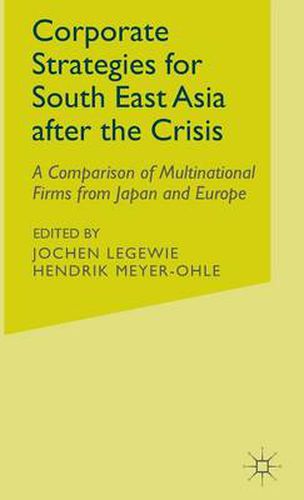Readings Newsletter
Become a Readings Member to make your shopping experience even easier.
Sign in or sign up for free!
You’re not far away from qualifying for FREE standard shipping within Australia
You’ve qualified for FREE standard shipping within Australia
The cart is loading…






This title is printed to order. This book may have been self-published. If so, we cannot guarantee the quality of the content. In the main most books will have gone through the editing process however some may not. We therefore suggest that you be aware of this before ordering this book. If in doubt check either the author or publisher’s details as we are unable to accept any returns unless they are faulty. Please contact us if you have any questions.
Multinational companies have played a major role in shaping economic development in Southeast Asia. While financial and portfolio investors abandoned the region, investors from Europe and Japan have demonstrated confidence in the future of Southeast Asia as a production base for exports and a growing market for products, remaining in the region even after the crisis. In production, they used the crisis to rationalize their operations. In marketing, they adapted to the specific needs of Southeast Asian consumers. To understand the region’s future, one must understand how the Asian economic crisis affected these companies, how they have responded since and how they will respond in the future. This text presents an in depth analysis by experts from Europe, Japan and Southeast Asia who have long standing research experience in Asian economies and international business. The authors draw upon empirical research to analyze the questions facing multinational corporations active in the region, and go on to examine their strategies in production, marketing and corporate finance. They present a comprehensive overview of the current activities of multinational firms from Europe and Japan in Southeast Asia. The authors address both questions of international strategy and the role of multinational companies in a global economy, while taking into account how national differences affect strategic decision making. More than a reader for business people in Southeast Asia, the book should be of interest to policy makers and all those interested in the shift from national to transnational business.
$9.00 standard shipping within Australia
FREE standard shipping within Australia for orders over $100.00
Express & International shipping calculated at checkout
This title is printed to order. This book may have been self-published. If so, we cannot guarantee the quality of the content. In the main most books will have gone through the editing process however some may not. We therefore suggest that you be aware of this before ordering this book. If in doubt check either the author or publisher’s details as we are unable to accept any returns unless they are faulty. Please contact us if you have any questions.
Multinational companies have played a major role in shaping economic development in Southeast Asia. While financial and portfolio investors abandoned the region, investors from Europe and Japan have demonstrated confidence in the future of Southeast Asia as a production base for exports and a growing market for products, remaining in the region even after the crisis. In production, they used the crisis to rationalize their operations. In marketing, they adapted to the specific needs of Southeast Asian consumers. To understand the region’s future, one must understand how the Asian economic crisis affected these companies, how they have responded since and how they will respond in the future. This text presents an in depth analysis by experts from Europe, Japan and Southeast Asia who have long standing research experience in Asian economies and international business. The authors draw upon empirical research to analyze the questions facing multinational corporations active in the region, and go on to examine their strategies in production, marketing and corporate finance. They present a comprehensive overview of the current activities of multinational firms from Europe and Japan in Southeast Asia. The authors address both questions of international strategy and the role of multinational companies in a global economy, while taking into account how national differences affect strategic decision making. More than a reader for business people in Southeast Asia, the book should be of interest to policy makers and all those interested in the shift from national to transnational business.